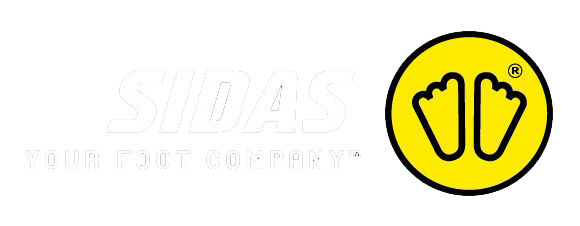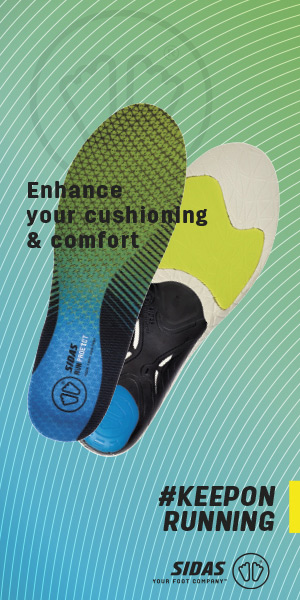FEET ARE YOUR TOOLS, PROTECT THEM!
28 bones, 16 joints, 107 ligaments, 27 muscles… The foot is a masterpiece. A phenomenal machine. An intricate web of parts. An expert design created by Mother Nature. You don’t have to go to the Louvre to know that masterpieces need to be protected. Just like the Mona Lisa, our feet, and our legs in general, require a high level of protection. Especially when they are put to the test with the traumatic effort it takes to run.
The runner with clay feet
Types of injury
Even though exercise is good for your health, running can have a negative impact on the body if it is not done with care. Be careful! Running isn’t dangerous, in fact it is quite the opposite. However, the risk of injury is real, something which 80% of runners have already bitterly experienced. Why? Primarily because with every stride and every impact, our foot must absorb 3.5 times our weight.
It’s hard to find someone savvier than Marion Delespierre to speak to the paradoxical nature of running, a sport that walks a fine line between feeling fit and being injured. A young sports medicine doctor based in Lyon, Delespierre is also a high caliber athlete with nationally, and even internationally, known Trail awards. Legend has it that she even went to take her Hippocratic oath in sneakers.
“There are two types of injuries linked to running: those that are traumatic, resulting from a fall or an awkward movement, and those caused by fatigue, overuse or bad posture.” Among these injuries, some return to her office more regularly than others: “Tendinitis of the Achilles tendon or the knee are the most common conditions. Next come muscular injuries, then stress fractures and, more rarely, Plantar fasciitis.” This observation is corroborated by Marie Maligorne, the head of SIDAS sports orthopedic center: “After blisters, inflammation and bruises under the nails, injuries directly affecting the foot and pain in the knee and Achilles tendon are the most recurrent.”
Causes of injury
As such, the goal is to treat the injury, to heal it, but then to analyze the cause and make sure it remains a distant memory that never returns.
Marion Delespierre has identified two primary reasons people who hit the pavement come to visit to her: “Running is a popular sport, an unintimidating trend in both practice as well as in the information that surrounds it. The novice runner feels invigorated and becomes very (even overly) independent in their training.” And it is here that the two primary risks for injury arise: “A sudden increase in the amount of training and a quick change to using new equipment that may not be appropriate.” This observation clearly reveals two primary pieces of advice for avoiding physical injury: increase your distance very progressively and select appropriate equipment, particularly shoes. The doctor concludes: “The body can adapt to anything, but you must give it time—be patient!”
Ingredients for running with protection
When running, protection implies keeping yourself safe from the risk of injury. First, prioritizing recovery from a previous injury, but also preventing injuries before they occur. The old adage is true: prevention is better than healing! Sidas product manager Margaux Denantes confirms: “We truly approach things from the standpoint of anticipating the numerous microtraumas that the body accumulates with every stride. Our goal is to minimize impact shock so you can avoid injuries in the short term and devote yourself to your passion in the long term. That way you won’t need to put your sneakers away when you’re 40!” In addition to the purely physical-mechanical benefits, the resulting protection also has psychological benefits: “Feeling safe allows you to have more confidence, to be less focused on terrain obstacles and, thus, more tuned in to sensations and the moment…”
Given the absolute necessity of staying informed to avoid running injuries, it is helpful to list different methods for taking precaution.
For the doctor in Lyon, the priority is GPP (General Physical Preparation): “Preparing your body for exertion is essential. This means working the feet, strengthening the deep muscles in the lower body, activating the gluteus medius, which is something we all need to do… The idea is to strengthen the entire “hip-knee-ankle” axis. To do so, static or dynamic toning is very effective. Sometimes, I even recommend a short 20-minute jog followed by a GPP session rather than a traditional run!” For stretching? “It’s like philosophy, there are different schools of thought. Personally, I recommend dynamic stretches, because starting cold is a source of muscular injuries.” Hydration, diet and training management are also other important factors for which expert advice can be very useful.
Finally, the three experts are in agreement regarding the importance of equipment and the positive impact of soles. The Sidas product manager explains: “For us, the equation is pretty simple. Protection = comfort + support + stability!” Margaux Denantes continues: “Our claim is not to resolve a problem or to correct a stride but to offer a comfortable solution that promotes injury prevention.”
The PROTECT line was developed from this perspective. Thanks to its bowl-shaped heel that resembles the seat of a chair, the sole will accommodate and cradle the back of the foot, providing comfort and stability. Gel in the heel and under the front foot pads ensure support. It’s a level of protection that would make the Mona Lisa in the Louvre blush.



